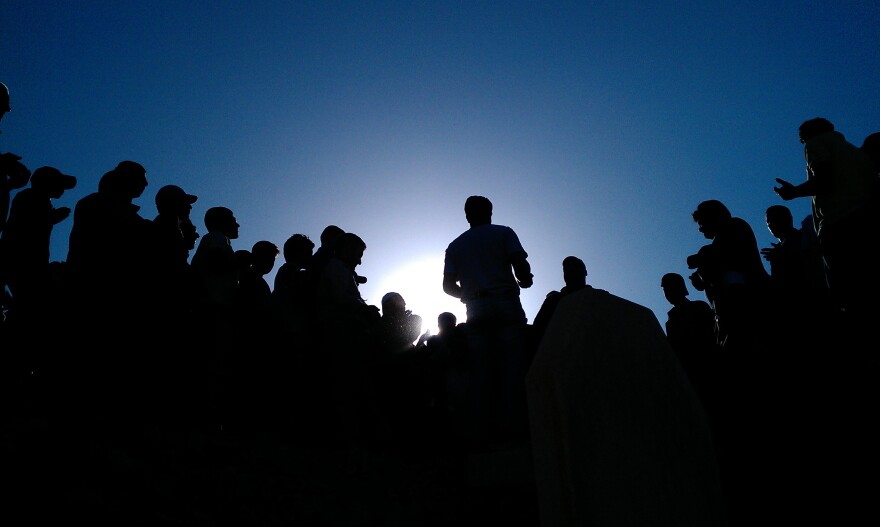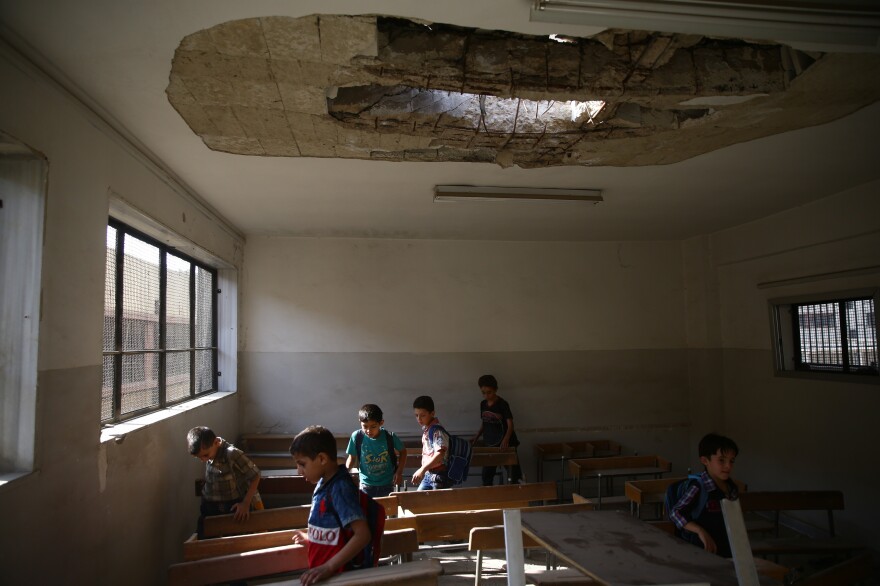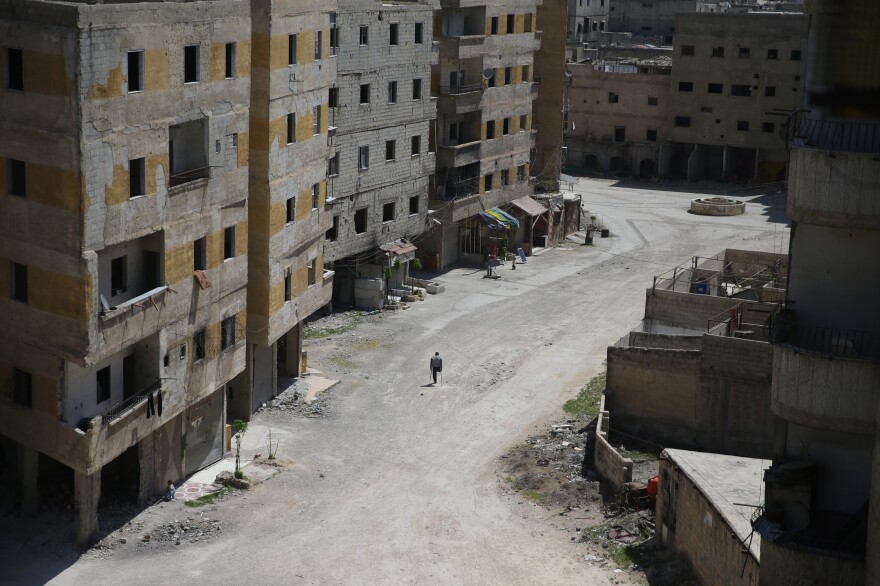Ten years ago this week, Syrian government forces opened fire on protesters, setting off a bloody civil war. Since March 2011, the civil war has claimed hundreds of thousands of lives and displaced more than 10 million people.
In the early days of the uprising, Bassam Khabieh, then an amateur photographer, picked up his camera — his phone at the time — and began documenting what would be years of urban warfare from his hometown of Douma, a rebel holdout.

Over the course of the war, Khabieh's camera lens has often focused on children — many who have known only fighting their whole lives.

Amid the tremendous suffering in his photos, there is also resilience. In his forthcoming photo book, Witnesses to War: The Children of Syria, he captures kids growing up under tenuous conditions as families grip whatever moments of normalcy that they can. Children are seen playing between violent attacks, studying in bombed out schools, having dinner surrounded by rubble.

The cover of the book, a photo of a girl blowing bubbles, is one glimpse at daily life, Khabieh said, that "tells us about a lot of stories."
The child was standing in the middle of the wreckage in a destroyed neighborhood when she started blowing bubbles toward the sky — the same sky where an airplane had just dropped missiles, he said.
"This is the message that the life is continuing and even this brutal war will not deter the children from continuing their life."
In eastern Ghouta, he said, locals who once took shelter as war planes flew overhead have grown accustomed to the terror.
"After one or two years, I start to notice that people don't care anymore," he said. "If there is an air strike in their neighborhood, they just start cleaning the debris and opening their shop and continue their life because this is what they want to do — they want to live, you know."

Khabieh, who worked as a computer engineer before taking up photography full-time, said he never imagined covering the chilling events that he and his camera have witnessed over the years.
In 2013, a photo he took of the deadly aftermath of a chemical attack on civilians, seen on the front page of The New York Times, shocked the world. It showed a row of children and adult victims wrapped in white shrouds.
He vividly recalled how difficult it was to be there, next to the still bodies.
"There was a lot of pain on their faces," he said. "We journalists, we want to tell the story, but we, at the same time, we need also to help people because it was overwhelming," he said.
It's just one of many grave moments Khabieh has encountered in his career.

Syrian authorities have used Khabieh's images to track people who have participated in opposition movements, he said, which is why he has been vigilant about how he frames many of his subjects so as not to risk exposing their identities.
In a photo he took in 2012 of mourners gathering to pray for protesters killed by the Syrian regime, no faces are shown. Their silhouettes are backed by an intense blue sky.

Alia Malek, a Syrian-American journalist and author of The Home That Was Our Country: A Memoir of Syria, wrote the book's introduction and interviewed Khabieh to bring out the stories behind his photos.
If the photos serve as a form of witness accounts, she said — a sentiment reflected in the book's title — she hopes that their work inspires action toward a better future.
"The photographs can serve as a kind of testament, or witness statements, witness photographs, if there's going to be any kind of accountability processes that we might be able to hope for in the future," Malek said.
"So while it might not have been able to save those children's lives or to have changed what the nature of their childhood was like, there might be a possibility for justice in the future."

Khabieh moved from Syria to Turkey in 2018. He took a break from working in the field and became a photo editor, as he thinks about a next chapter in his career.
In Turkey, he plans to pick his camera back up soon to document the Syrian community there.
"In Turkey, we have 4 million refugees," he said. "So there is, I think, 4 million stories to tell."
Copyright 2023 NPR. To see more, visit https://www.npr.org.






